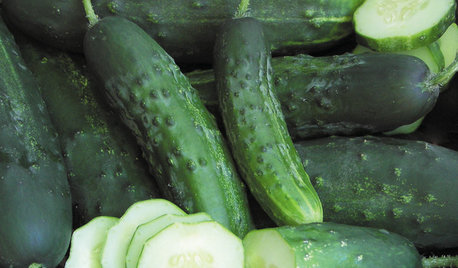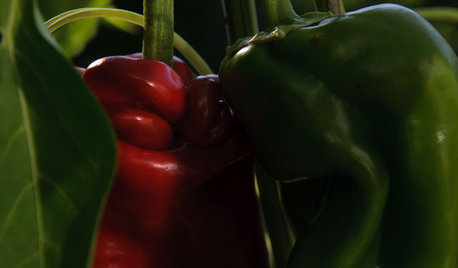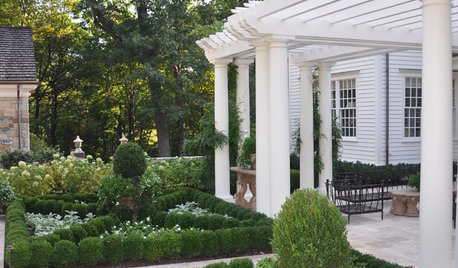rotating crops in small veggie garden?
tigereyes
13 years ago
Related Stories

EDIBLE GARDENSHow to Grow Your Own Sweet Summer Crops
This guide will help any gardener get started on growing the freshest warm-season veggies and berries for summer
Full Story
GARDENING GUIDESOrganic Matters: Thwart Insect Pests With Trap Crops
Add a few sacrificial plants to your garden to lure insects away from the harvest
Full Story
SUMMER FRUITS AND VEGETABLESSummer Crops: How to Grow Cucumbers
Pick a peck for pickles or opt for fewer and raw — no matter how you slice them, cucumbers are great for summer gardens small to large
Full Story
GARDENING GUIDESSummer Crops: How to Grow Peppers
Some like 'em hot; others like them sweet. With the incredible range of peppers available for home gardens, you can have your pick
Full Story
GARDENING AND LANDSCAPINGCream-of-the-Crop Vegetable Gardens
Both trendy and traditional, these inspired potager designs turn the everyday vegetable garden into art for your landscape
Full Story
EDIBLE GARDENSSummer Crops: How to Grow Tomatoes
Plant tomato seedlings in spring for one of the best tastes of summer, fresh from your backyard
Full Story
EDIBLE GARDENSSummer Crops: How to Grow Squash
Almost foolproof and with cheerful flowers, squash comes in a wide range of varieties to plant in spring
Full Story
FARM YOUR YARDIf You Have Room for Only One Summer Crop ...
Get an edible that’s long on flavor even if you’re short on space, with a long-time gardener’s favorite picks
Full Story
HOUZZ TVHouzz TV: How to Make and Plant a Veggie Box
See how to start edibles from seed, then transfer the seedlings to a box on stilts to make harvesting more fun
Full Story
FARM YOUR YARDHow to Build a Raised Bed for Your Veggies and Plants
Whether you’re farming your parking strip or beautifying your backyard, a planting box you make yourself can come in mighty handy
Full StoryMore Discussions







lunita
Dan _Staley (5b Sunset 2B AHS 7)
Related Professionals
Belmont Landscape Architects & Landscape Designers · Rossville Landscape Architects & Landscape Designers · Newcastle Landscape Architects & Landscape Designers · Stoughton Landscape Contractors · Allentown Landscape Contractors · Berkley Landscape Contractors · Eagle Landscape Contractors · East Lake-Orient Park Landscape Contractors · Indio Landscape Contractors · Medford Landscape Contractors · Northbridge Landscape Contractors · Ponte Vedra Beach Landscape Contractors · Chattanooga Driveway Installation & Maintenance · Middle Island Driveway Installation & Maintenance · Campbell Driveway Installation & Maintenancetaz6122
nygardener
pnbrown
KatyaKatya
dunca
Dan _Staley (5b Sunset 2B AHS 7)
taz6122
bejay9_10